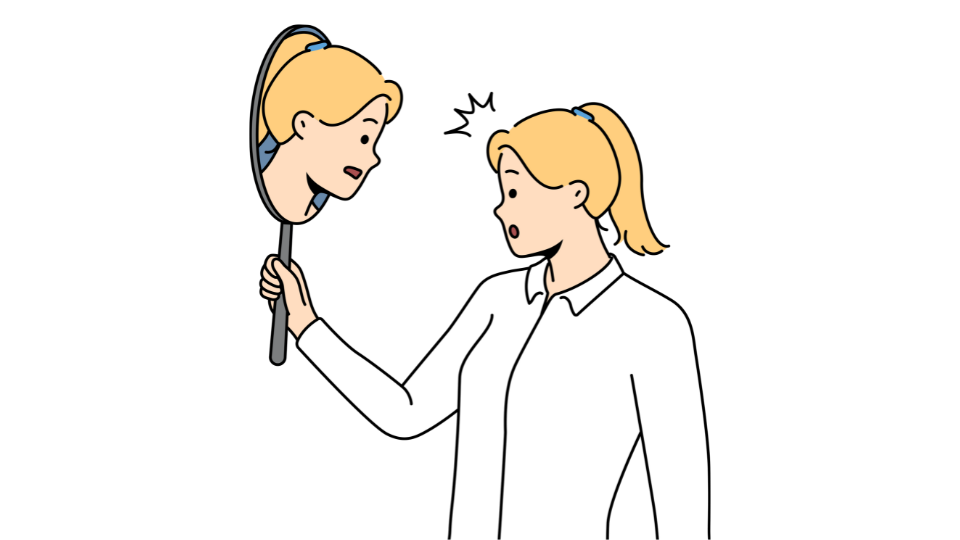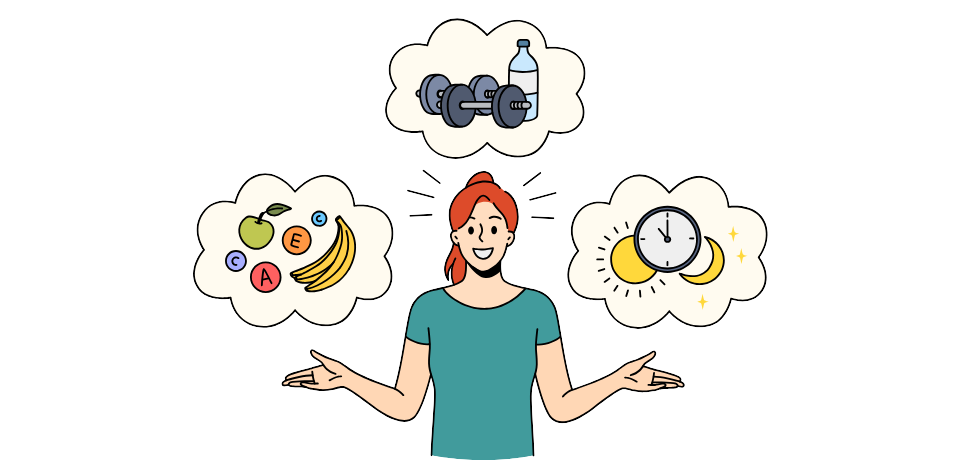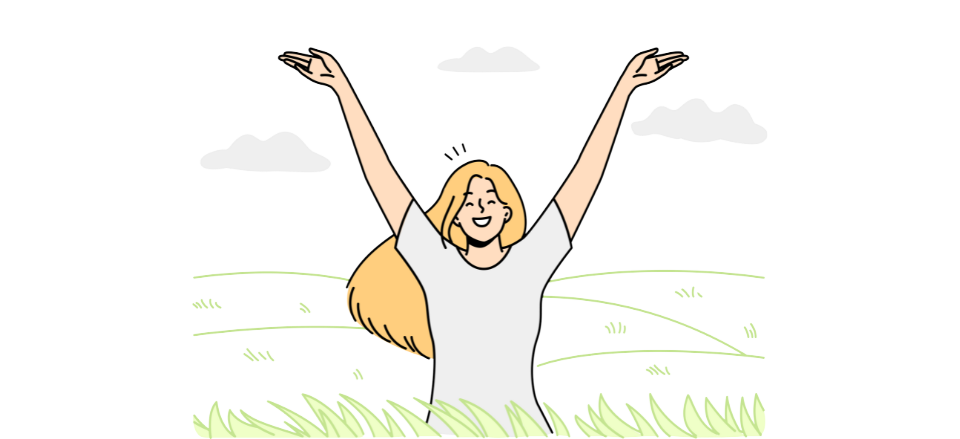Burnout is a silent crisis of our industry today. So, let’s talk about how we can better guard against it, and how to tackle it in a healthy way if and when it hits. We’ve put together our thoughts, as well as some tips and personal experiences from our team. Hopefully, this can help you build a healthier way forward
Creative burnout is something of a hot topic these days. Seven out of ten professionals in creative fields say they have experienced it in the past 12 months, and a recent MarTech Edge survey shows that 73% of content creators occasionally experience signs of burnout. And although this has drawn a lot of much-needed attention from mental health professionals and employers alike, it still remains a fresh and understudied subject.
On the bright side, this buzz has helped spread awareness across the industry, bringing professionals to accept that this condition can affect anyone from aspiring creators to seasoned artists. When it hits, projects that used to inspire you to go above and beyond start to feel like a burden. The mere thought of a new undertaking causes our psyche to protest and resist, and the usual joy of engaging in the art of creation is nowhere to be found.
But burnout doesn’t just happen overnight, it builds up gradually and tends to go unnoticed until you’re facing overwhelming odds.
In order to deal with the symptoms and find your creative flow again, you need to be able to recognize the three conditions that are often mixed up: creative block, burnout, and depression.
Three States: Block, Burnout, and Depression
Creative Block
Creative block is something that nearly every creative faces at some point. We all have our highs and lows, and it’s not all that uncommon to have a tough week that leaves you drained. The most usual culprits here are anxiety, boredom, and stress, the so-called “cursed problems”—catch-22s you have no workaround for. This makes creative blocks relatively moderate as far as these conditions go. Most creatives have their well-trodden pathways to help themselves clear their head or give themselves a nudge to help break free.
Creative Burnout
Now, burnout is a far more serious condition. It typically happens as a result of getting overworked, or dealing with high levels of stress for a prolonged time. And while sometimes it’s difficult to keep your head above water, ignoring this fatigue for a prolonged time can lead to lasting damage, where you can no longer find joy in your creative pursuits. This condition doesn’t only hinder your ability to create and function, it brings out the inner doubts, makes you question yourself and the direction you’re taking.
Depression
Depression is a mental health disorder that impacts every area of a person’s life. It is a persistent condition marked by loss of interest in activities once enjoyed, feelings of guilt, as well as disruptions in sleep and appetite. While creative block and burnout can be overcome with rest and lifestyle changes, depression is a serious condition that requires professional attention.

Signs of Burnout
Now that we have a better understanding of creative burnout, let’s review the signs to look out for:
- Loss of interest and creative drive. Projects that used to move you no longer bring any joy. Even thinking about work seems difficult.
- Lack of inspiration. Ideas that once flowed effortlessly now seem out of reach. You struggle to come up with anything new, and even your old ideas feel dull and unworthy of pursuing.
- Physical fatigue and illness. Persistent exhaustion, apathy, frequent headaches, and recurring colds are all common physical symptoms that accompany creative burnout.
- Overwhelming indifference. Each project feels like a chore. You’re just pushing to finish and hand it in—quality doesn’t seem to matter anymore.
- Procrastination. You keep putting it off, telling yourself you’ll start after making tea, getting snacks, giving in to that nagging voice telling you to start tomorrow or next week.
- Cynicism. You lose faith in your ideas, or perhaps ideas altogether. You feel vexed, easily irritable, ready to snap.
It’s not always easy to identify these patterns on your own, and outside perspective can be a real help. Talk to your family and coworkers, try asking them if they’ve noticed any changes in your behavior. Those around you can sometimes see what’s happening before you do, and their answers can help you provide the clarity you need to take action early.

Preventing Creative Burnout
One of the better ways to deal with burnout is to prevent it in the first place. Here are some tips—they might seem basic, but they’re still important to practice:
- Rest and balance. We live in a fast-paced world, and that sometimes blurs the line between one’s work and personal life. You might have to cross this line on occasion, but you should avoid falling into the trap of overworking. Create and follow a schedule that gives you time even for the sake of itself, even if you can afford to do work here and now.
- Activity and exercise. Physical activity goes a long way to improve our mental health, and regular exercise helps reduce stress, boost energy levels, and improve focus. Yoga, rollerblading, rock climbing, or even a brisk walk can do wonders for your mental well-being.
- Hobbies outside work. Take up an activity that has nothing to do with your work. Pick up sculpting, learn an instrument, revisit some old favorite games—creativity thrives on fresh ideas, and sometimes the best way to replenish your drive is to give yourself a different medium to enjoy.
- Reflection and meditation. Make time for yourself every day, even if it’s just five minutes. A brief meditation can help you tune in to your emotions and reduce stress. It’s also an ideal medium for introspection, which can help you catch the early signs of burnout before they escalate.

Transforming Burnout Into Breakthrough
If you realize the burnout has set in, don’t be afraid to reach out for help. Whether it’s a therapist, a coworker, or a trusted friend, talking to someone who understands can provide relief. Sharing what you’re going through lifts some of the load, and can help you start to gain perspective on the situation and the next steps.
Take a break.
Distract yourself for a while, get some distance from the routine. The most important part here is for this break to be complete—you need to feel safe and out of its reach. If you can’t take a vacation, turning off work chat notifications during non-working hours is the first step.
Fix your sleep.
Fatigue and insomnia are often both the indirect causes and byproducts of burnout. Restoring your sleep schedule is the first step to recovery. Most of us thrive on routine, so it helps to make a habit to go to bed at the same time each night. Some find it helpful to practice simple rituals, like airing the room, taking a warm shower, or minimizing screen time 30 minutes before bed. Naturally, reading easily comes to mind as a great way to relax and clear your mind. If you have a difficult time waking up, you can try to spice up your morning routine with a contrast shower, a hot cup of tea or coffee, or some light stretching to get your day started on a positive note.
Reconsider your approach to work.
Changing your approach to work can help shake things up and shift your mindset.
Our minds are primed to build little pathways that feel cozy and convenient, but sometimes these can be somewhat regressive.
Try introducing something new to your routine: Switch to a new hot drink, add a lunch break, use different note-taking or other task-related apps or platforms. The point is to trick your mind into exploring something new and rewarding, something that induces positive change.
You can change your workplace, rearrange your desk or room. If you work on-site, see if a coworker is down to switch places with you for a couple of days. Explore new pipelines or try that one technique you learned a long time ago but never got to use.
Go back to the roots.
Think back to what inspired you at the beginning of your creative journey. It could be some artist you looked up to, a book or movie you loved, or a place you frequented.
Connect with other creatives.
You’re not alone—socializing with coworkers and people who can relate to your journey can help shake it off. Perhaps there’s a meetup planned in your area, or some exhibition taking place? If you’re more indoorsy, you can find many communities online—like Reddit, Discord, or Facebook spaces for like-minded people.

Here are some insights from our lead artists on staying productive, motivated, and inspired in your creative process:
For me, the key is keeping my work organized and my ToR clear, to ensure all tasks are filled out properly. One might say I’m a stickler, but it’s just nice when things are neat and tidy, feels rewarding in its own way. Dopamine and all that. :-)
– I also believe in the power of constructive feedback, ideally following the “sandwich” method—layering praise with actionable points to improve on.
– Might not be everyone’s thing, but I also love spending time with my team. Having open and relaxed chats, meeting up for games (even online!), doing quizzes—all this helps me stay grounded and connected. I’d also say it helps build cohesion, lets you talk and work through ideas or problems together. Last but not least, specializing. We’re all artists here, but everyone has their medium, so I like working on teams that let everyone pick an area that brings out their most creative self.
– For artists, this can mean specializing in specific themes or settings, like illustrating characters, or environments, or working with concept art alone, etc.
Anna Zhilina
Lead 2D Artist
On the other hand, you can engage in therapy and work through your personal challenges.
– It helps me to set little meaningful goals even for the most routine tasks, like “Here I’ll focus on the colors and try to touch them up.” Shifting your attention away to something you personally enjoy can make a big difference.
– Another trick is to draw a firm line between your work and personal life. It’s up to you to take care of your health, which you will inevitably sacrifice if you’re constantly overworked. Let work stay at work, and give yourself genuine rest when it’s time to rest. I think that people get burned out when they let work stay on their mind after hours.
– Do not let your work define you. The quality of your work isn’t the quality of you as a person, and if a task proves difficult, if there’re lots of editing and revisions required, it doesn’t make you worse as a person. It’s just a difficult task.
– It helps to remind yourself from time to time that your journey is unique.
– Don’t compare yourself to others because it’s never going to be fair. You’ve had your challenges and you’ve triumphed. As long as you keep creating, you’re growing—even if it doesn’t always seem like it. I kind of like to go over my old work from time to time to see how far I’ve come.
Anna Sychova
Lead 2D Artist
Denis Dementiev
Lead 2D Artist
Marko Miladanović
Lead 3D Artist
We’ve also got an article up about Yura Kotov: The Dynamic Life of an Art Lead | Allcorrect. Read all about his perspective on artist burnout, and learn more about the ins and outs of the life of a lead artist in this industry.
The main takeaway is to take care of yourself. Creativity is this amazing process that requires not only skill, but also keeping your inner balance and stability. We all need care and a break at times. Remember to listen to yourself, be aware of your feelings, and give yourself time to rest and reboot.





